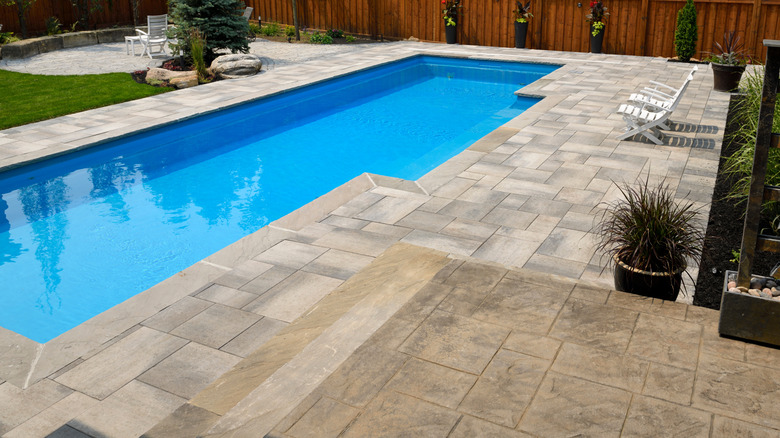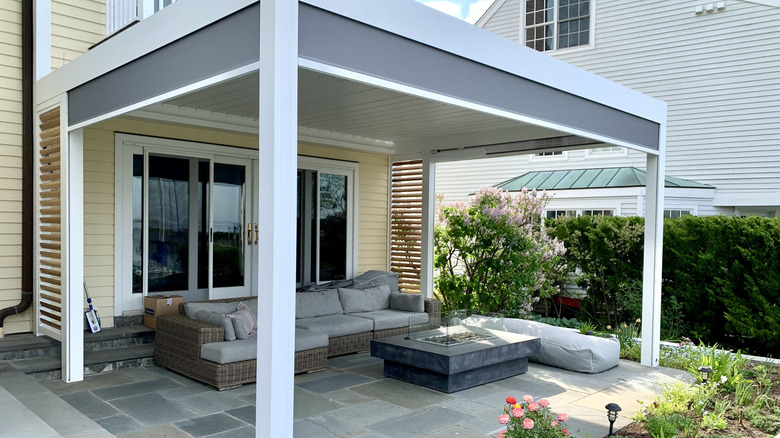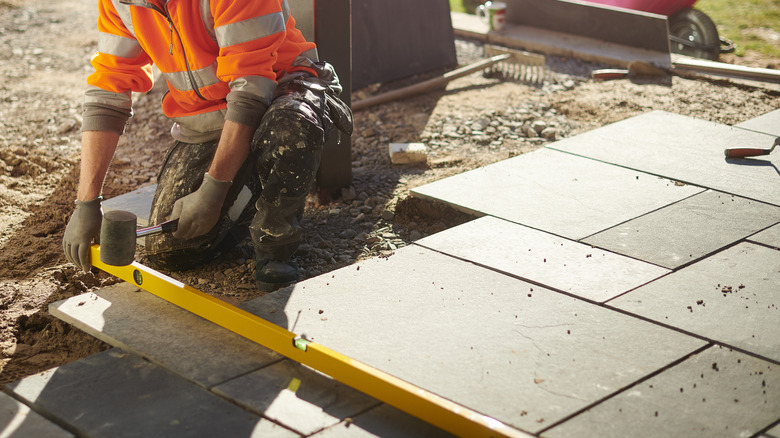What Are Heat Resistant Pavers And Should You Try Them In Your Yard?
With all the options out there, choosing the right type of pavers for your yard can be tough. Though you'll want pavers that suit the aesthetic of your garden, it's crucial to consider what the pavers will be used for and how much your local climate may impact usability. If you're putting in a patio or pool deck, how your pavers respond to heat is going to be really important for functionality. After all, no one likes tiptoeing around on burning walkways or feeling like the soles of their feet might catch fire. If you need to keep your project cool, heat-resistant pavers are the way to go.
Pavers come in a variety of materials, like porcelain, brick, and concrete. However, many types of pavers are known to hold onto heat. Depending on the project, that may or may not matter to you. For example, concrete pavers are still an excellent, low-maintenance choice for your fire pit. But if you want a heat-resistant option, then natural stones like granite, sandstone, marble, and travertine are your best bet.
Each of these materials comes with pros and cons to consider. Although travertine is known for its durability, it's an extremely porous stone. This means it needs to be properly sealed to avoid staining, and you must be careful with the cleaning products you use. Meanwhile, marble offers a luxurious look, but it's more expensive and more prone to damage than harder materials like granite. Ultimately, though, heat-resistant pavers are a great way to ensure that projects like pool decks and patios are comfortable and enjoyable to use.
What else can you do to maximize heat resistance?
With so many heat-resistant pavers to choose from, you can likely find one that suits your project and personal preferences. But in addition to considering material, you'll also want to pick the perfect paver color that will suit your style and keep your floor surface cool. Darker colors absorb more sunlight and get hotter more quickly, while lighter colors reflect light to stay cooler for longer. Use this knowledge to your advantage by selecting pavers in a pale shade. Even if you end up using a less naturally heat-resistant material, you can still keep pavers cool by choosing light colors such as white, tan, or light gray.
Creating shade is another way to not only minimize how hot your pavers get but also ensure they last as long as possible, as sunlight is one of the main reasons that pavers fade over time. When it comes to shade, you can get creative with it. For example, a pergola not only provides cover, but it's also an affordable and stylish upgrade for your outdoor space. Alternatively, utilize landscaping to your advantage. Placing greenery like trees and shrubs alongside your outdoor project can not only save you from hot days but also add more natural beauty to your space.
What to remember when installing pavers
Once you've settled on the right paver for your project, you can hire a professional or lay the pavers yourself. If you choose to go the DIY route, be sure to avoid common mistakes when installing pavers. For example, when installing on an uneven surface, excavating your yard is mandatory. It may seem appealing to skip, but this is a vital step that gives your pavers a stable base. You should also make sure to do thorough research on your paving material to see if there are any specific steps to be taken with their installation.
Additionally, map out your project area and check for underground utilities before you begin. This will ensure that you have enough material for your project and that you won't run into any unexpected obstacles. After all, you don't want to hit a phone or gas line. Most importantly, be sure to take your time. Ultimately, most people make mistakes because they're taking shortcuts. However, doing your project correctly right from the start will likely save you time and money in the long run.


